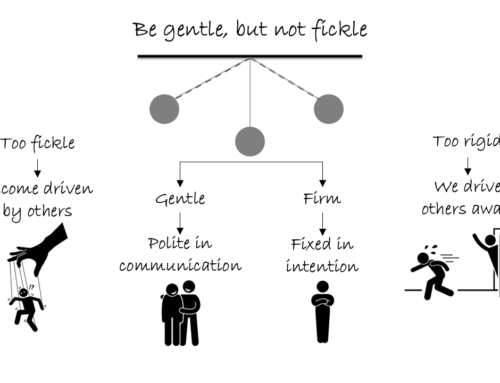How the worldview of desire has been exaggerated and exacerbated by technology
The worldview of desire, where individuals believe that attaining, enjoying, and showcasing desirable material objects is the purpose of life, has been a defining aspect of human society across history and geography. In modern times, this worldview has been significantly fueled and facilitated by technological advancements. Let’s examine how technology has amplified this worldview and its consequences for humanity.
Technology’s role in fueling the worldview of desire
Technology has magnified the worldview of desire in three key ways:
- Externally: By producing increasingly attractive versions of desirable objects.
- Internally: By fueling desires through relentless propaganda and advertising.
- Intermediately: By providing instant and widespread access to these objects.
- External production of desirable objects
Technology has been used to produce increasingly appealing versions of desirable objects. These range from cosmetic enhancements in the beauty industry to highly processed foods engineered for maximum sensory stimulation. Examples include:
Cosmetic surgery: A multi-billion-dollar industry offering enhanced physical attractiveness.
Food processing industry: Produces foods designed to maximize flavor and sensory appeal, often at the cost of health.
Drugs and intoxicants: Technologically altered or synthesized substances have fueled global addiction epidemics.
- Internal fueling of desires
Through advertising and media, technology creates a constant barrage of stimuli that trigger and amplify desires. The advertising industry, supported by technology, uses various platforms to keep people in a state of heightened sensory stimulation. Examples include:
Billboards and commercials: Display desirable objects in ways that are hard to ignore.
Movies and TV shows: Glamorize lifestyles centered on material indulgence.
Consumer and lifestyle products: Industries thrive on creating new needs, pushing people into perpetual consumption.
This constant stimulation leaves people agitated and dissatisfied, as they perpetually chase fantasies that rarely match reality.
- Intermediate provision of access
Technology has made accessing objects of desire easier than ever. The internet, for instance, has revolutionized how quickly and conveniently people can consume desirable content.
Online adult content: Streaming technology allows individuals to consume vast amounts of sensual imagery, far beyond what was historically possible.
E-commerce platforms: Provide instant access to luxury and lifestyle products, often fostering impulsive buying habits.
Additionally, advancements in military and civilian weaponry have made life-threatening choices far more accessible, contributing to societal instability.
The consequences of technological facilitation
While technology has undoubtedly provided life-saving advancements, such as improved healthcare and connectivity, its role in fueling the worldview of desire has led to several problems:
- Addiction and agitation: Enhanced production and accessibility of objects of desire have made addiction and agitation more prevalent.
- Environmental degradation: Rampant consumption depletes resources and harms the environment.
- Unrealistic expectations: Advertising and media create fantasies that rarely align with reality, leading to dissatisfaction.
- Increased frustration: Technology hasn’t changed the fundamental realities that frustrate the worldview of desire:
Death: The inevitability of death renders all pursuits temporary.
Finiteness: The limited availability of resources, objects, and sensory capacity makes desires unfulfillable.
Bhagavad Gita’s cautionary wisdom
The Bhagavad Gita (16.8-16.9) warns that a purely materialistic worldview can lead to both self-destruction and world destruction. This prophecy is evident in how technology-driven desires have heightened personal and societal frustrations.
Summary:
How technology has exaggerated the worldview of desire:
Production: Technology creates more attractive versions of desirable objects, such as cosmetics, processed foods, and intoxicants.
Propagation: Advertising and media relentlessly fuel desires, keeping people in a state of agitation.
Provision: Instant access through the internet and other technologies has made indulgence easier but more destructive.
Consequences: Technology has not altered the inevitability of death or the limitations of resources and sensory capacities, leading to greater frustration and dissatisfaction among people.
Conclusion: While technology has facilitated materialistic desires, it has also highlighted the futility of the worldview of desire, urging thoughtful individuals to seek alternative perspectives.
Think it over:
- What are the three ways in which technology has affected the worldview of desire, and how has this led to greater frustration?
- Which aspects of technological facilitation have particularly impacted you, and how can you protect yourself from them?
- How does technology leave the fundamental realities that doom the worldview of desire—death and finiteness—unchanged?
***
16.09 Following such conclusions, the demoniac, who are lost to themselves and who have no intelligence, engage in unbeneficial, horrible works meant to destroy the world.




Leave A Comment